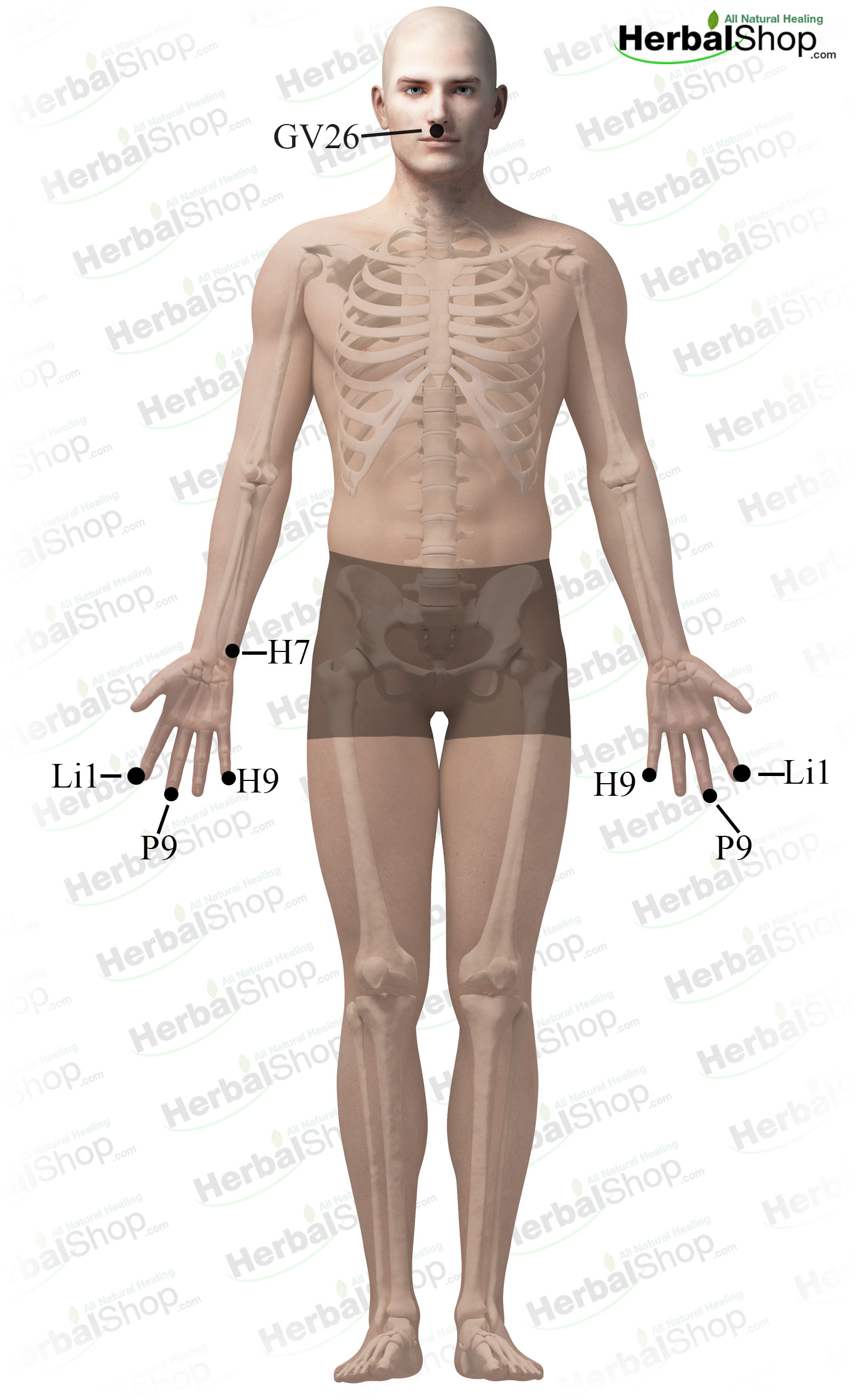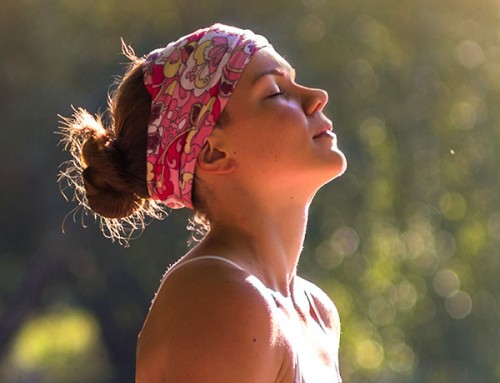These are the acupressure points for cardiac arrest and respiratory arrest. Working on these points can help you get better faster. You do not have to use all of these points. Using just one or two of them whenever you have a free hand can be effective.
Acupressure Point GV26 — Ren Zhong
Chinese Name: 人中
Location: below the nose, a little above the midpoint of the philtrum. in the hollow between the upper lip and the nose.
Benefits: revival point from cardiac and respiratory arrest, mental disorders, epilepsy, convulsions, coma, facial paralysis, swelling of the face, low vitality, lockjaw, diabetes, fainting spells, chest pains, heart attacks, heat stroke, middle and lower back aches, spasms of the lower back, face lift point.
Acupressure Point GB12 — Wan Gu
Chinese Name: 完骨
Location: in the depression below the mastoid process.
Benefits: headache, insomnia, pain and stiffness of the neck, swelling of the cheek, toothache, facial paralysis, shortness of breath, great revival point from respiratory arrest
Acupressure Point P9 — Zhong Chong
Chinese Name: 中沖
Location: in the center of the tip of the middle finger.
Benefits: revival point, cardiac pain, irritability, loss of consciousness, heat stroke, febrile diseases, stiffness of the tongue, unusually warm palms and soles, fainting, poor memory, shortness of breath.
Acupressure Point LI1 — Shang Yang
Chinese Name: 商 陽
Location: on the radial side of the index finger, at the corner of the nail.
Benefits: great revival point, toothache, sore throat, swelling of the submandibular region, numbness of the fingers, fainting, loss of consciousness, regulate vital energy
Acupressure Point H9 — Shao Chong
Chinese Name: 少沖
Location: on the radial side of the little finger, at the corner of the nail.
Benefits: cardiac pain, heart palpitation, pain in the chest and hypochondriac region, poor memory, fainting, mental disorders, loss of consciousness, shortness of breath.
Acupressure Point K1 — Yong Quan
Chinese Name: 涌泉
Location: in the depression appearing on the sole when the foot is in plantar flexion, approximately at the junction of the anterior and middle third of the sole.
Benefits: revival point, drowning, heart problem, sterility, muscular dystrophy, pain in the vertex, dizziness, blurred vision, sore throat, dryness of the tongue, aphonia, fevers.
Acupressure Point GB20 — Fen Chi
Chinese Name: 風池
Location: below the base of the skull, in the hollow between the two large, vertical neck muscles, two to three inches apart depending on the size of the head.
Benefits: occipital headache, dizziness, pain and stiffness of the neck, pain in the shoulder, fever, common cold, whiplash, hypertension, weakness of the whole body.
Acupressure Point UB15 — Xin Shu
Chinese Name: 心俞
Location: 1.5 body inch lateral to the lower border of the spinous process of the 5th thoracic vertebra.
Benefits: epilepsy, panic attack, palpitation, forgetfulness, irritability, cough, stage fright, depression, unhappy disposition, grumpy nature, never happy with anything, attitude problem.
Acupressure Point GV11 — Chen Dao
Chinese Name: 神道
Location: below the spinous process of the 5th thoracic vertebra.
Benefits: poor memory, anxiety, palpitation, cardiac pain, pain and stiffness of the back, cough.
It is important to drink plenty of warm water after the massage, to help clear away toxic substances in our body.
Caution: You should consult with a healthcare professional before practicing Acupressure or starting any diet, exercise, Chinese herbs or other supplementation programs.



